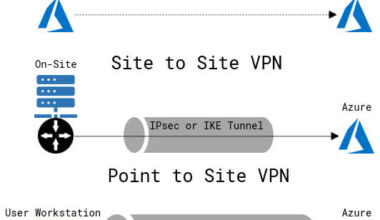Many businesses struggle with internal problems that can affect both the level of productivity and overall communication within the organization. An intranet may be able to resolve such issues, depending on the nature of the firm. The importance of using an intranet site cannot be emphasized enough.
So, what is an intranet, and how can you utilize it to improve the productivity of employees? Let’s talk about it!
What is an Intranet?
An organisation may have its own private network, known as an intranet, which allows employees to safely share information about the business as well as computing resources with one another. It relies on web servers, content management systems, and firewalls to function securely and efficiently. The security of intranets is typically maintained with the assistance of a database containing all of the usernames of employees granted access to the network.
Intranets can range from simple internal websites to complex systems with multiple interlinked LANs and WANs. Also, they offer a range of features, such as social intranet elements for employee profiles, submitting, liking, commenting, and sharing posts. They can also support group work and teleconferences and provide access to important information, applications, forms, and company records.
Communication among employees is fostered through the use of intranets in businesses. Because of this, employees can quickly access vital information as well as relevant links, applications, and databases containing the company’s records.
Features of the Modern Intranet
Modern intranets include features such as:
#1. Personalized Content
Modern intranets offer personalized homepages and timelines for employees, delivering relevant company news and announcements. It also has page builder tools for creating static communication, onboarding journeys, and wiki pages.
#2. Collaboration
Social networking, user-generated content, and cloud computing are emphasized in modern intranets, promoting employee participation, interaction, and collaboration.
#3. Integration with Other Tools
Integration with file-sharing solutions or built-in file storage systems. It integrates with other applications, like Microsoft 365, Yammer, and Teams, to provide a seamless digital workplace experience.
#4. Remote Access
Modern intranets offer cloud-based options or on-premise installations, enabling remote access to the site.
#5. Content Management and Document Sharing
It allows for direct editing of intranet documents, spreadsheets, and slides. Also, it has efficient systems for managing vast amounts of data and documents are essential in modern intranets.
#6. Admin Interfaces, Content Templates, and Analytics
Intuitive interfaces, efficient intranet administration and content management capabilities, and robust analytics dashboards are important features of modern intranets.
#7. Adaptability
Modern intranets are designed to evolve alongside the organization, focusing on incorporating changes that impact the business most. Site analytics and user feedback track progress and understand user behaviour.
What Is an Intranet Used For?
There are multiple uses of intranets, but three key uses include:
- Communication and collaboration: Intranets facilitate communication among employees, managers, and executives, making it easier to share news, updates, and information within the organization. They also provide tools for collaboration, such as document sharing, real-time editing, and task assignments with deadlines.
- Document and content management: Intranets help manage and control documents, track versions, and maintain a history of edits. They also provide centralized storage for company documents, videos, and audio files, making it easier for employees to access and share information.
- Information retrieval: Intranets act as a one-stop shop for all company information, making it easier for employees to find what they need. They provide powerful search capabilities and can act as a filter to showcase the most important information and context.
Other functions that an intranet site can be used for include:
- An intranet portal improves productivity and employee engagement through both top-down and bottom-up communication.
- The intranet site personalises tasks for employees to complete specific organizational roles.
- An intranet portal provides employees with a platform to search for information, manage workflows, and communicate across the organization.
How Many Types of Intranets Are There?
There are two main types of intranets; on-site and cloud-based intranets.
- On-Site Intranets: A business organization hosts these types of intranets entirely on-site. On-site intranets require a dedicated IT team to manage, update, and back up their servers. They are usually only feasible for large enterprises with sufficient resources to maintain them.
- Cloud-Based Intranets: These types of intranets are created, maintained, and made available online. They require no infrastructure on site and are instantly available online. However, cloud-based intranets have some security issues, leading some organizations to choose on-site intranets over them.
Types of intranets based on their functionalities and the extent of access granted to users:
#1. Organization-wide Intranets
These intranets provide a central hub for internal communication and collaboration, with features such as search engines, user profiles, blogs, mobile apps, and event planning. They are typically established using local area network (LAN) and wide area network (WAN) technologies.
#2. Extranets
Customers, suppliers, and other approved parties can access extranets, whereas regular intranets are only accessible to organizational employees. Extranets extend a private network onto the internet with provisions for authentication, authorization, and accounting (AAA protocol).
#3. Collaboration-focused Intranets
These intranets help facilitate working in groups and teleconferencing. They often include tools for project management, sales and customer relationship management, and corporate directories.
#4. Culture-change Platforms
Intranets are also helpful as corporate culture-change platforms, where many employees can discuss key issues, leading to new ideas in management, productivity, and other corporate aspects.
Pros and Cons of Using an Intranet Site
Using an intranet site offers multiple pros and cons. They are:
The Pros of Using Intranets
- Intranets give an opportunity for better communication.
- It makes sharing information easier.
- Collaboration within a business becomes easier.
- Managing records and making it easier
- It enables faster tracking of requests
- A place to test fresh company website concepts.
- It gives a better corporate culture that focuses on employees and encourages participation and interaction
- It gives a good return on investment due to low implementation and operating costs.
The Cons of Using Intranets
When setting up an intranet portal, some also problems can arise, such as:
- Security risks: Intranet security is a significant concern since all important data and information are collected in one place.
- Information overload: Managing and storing excessive amounts of information on the platform can be challenging.
- Time management and costs: Implementing and maintaining an intranet system can be time-consuming and result in recurring costs.
- Challenges in finding information: Some intranet systems have poor search engines, making it difficult for employees to find the information they need.
- Difficulty in updating content: The information on intranets can be hard to update, leaving resources and knowledge at risk of being inaccurate and outdated
- Complex and costly implementation: Implementing intranets can be complex and expensive, especially for custom intranets.
- Remote working: When mobile devices and remote help aren’t available, remote workers can find it hard to get information on the intranet.
Best Practices of the Intranet
To ensure that your intranet portal is effective, there are several best practices to follow, including:
- Make your intranet the preferred mode of communication to encourage employees to use it regularly.
- Look for intuitive, easy-to-use solutions designed with user experience (UX) in mind.
- Use your intranet to collect employee feedback through surveys, pulse polls, and post comments. Implementing feedback from employees can improve their experience and encourage others to share their opinions.
- Choose an intranet platform that is modern and designed with the needs of today’s workforce in mind. Traditional intranet solutions are often out-of-date and fail to reach every worker, impacting employee engagement.
- Implement an intranet that is accessible to all employees, regardless of location, to foster collaboration and communication.
- Ensure your intranet is mobile-friendly, as more employees work remotely and access company information on their mobile devices.
- To encourage employee engagement and collaboration, consider implementing social features like chat and messaging.
- Provide training and support to ensure employees can use the intranet effectively.
- Regularly update and maintain your intranet to ensure it remains relevant and helpful to employees.
- Choose a scalable intranet solution that can grow with your organization’s needs.
What Are an Intranet and Extranet?
An extranet is a type of intranet that lets people outside of a company use certain materials and programs. Some parts of the intranet are open to third parties, such as customers, suppliers, and business partners. It is distinct from an intranet because it is a private network accessible by authorized third-party users, such as clients or business partners, allowing secure information exchange between organizations.
An intranet is an organization’s private, secure network that facilitates employee communication, collaboration, and information sharing. Intranets are generally restricted to employees of the organization.
Two Differences Between Intranet and Extranet?
The two major differences between an extranet and an intranet are in the number of users and accessibility and security.
#1. The Number of Users and Accessibility
- Intranets are accessible only by a specific group or organization, typically the company’s employees, making them available to a smaller group of users.
- Many users, including members within the organization and external stakeholders such as suppliers, partners, and clients, access an extranet.
#2. Security
- Intranets are generally more secure due to their constrained interface and limited accessibility. They are secured by a defined firewall, providing security to the network to access the system.
- Since extranet networks are shared between the organization and external members, sensitive data is in danger of unwanted access. A firewall isolates the internet from the extranet, separating external users from company users for secure access.
What Is an Intranet Portal
An intranet portal is a starting point for accessing enterprise information or third-party applications. As a result, it enables businesses to more efficiently manage data, software, and other information by providing users with individualized perspectives. With the help of intranet software, businesses can build a private network that only their workers can access with a password.
Is VPN a Type of Intranet?
A VPN is not a type of intranet. An intranet is a private network sealed off from the internet and only accessible within an organization. On the other hand, VPN stands for “Virtual Private Network,” which creates encrypted communication between two computers over a public network such as the Internet, making it secure and private.
Is Google an Intranet?
No, Google is not an intranet. Intranets are the private networks that organizations use to share information and resources among their employees. While Google is a company that provides a suite of products, including Google Workspace, which is a collection of cloud-based productivity and collaboration tools. However, third-party intranet solutions can integrate with Google Workspace to create what is sometimes called a “Google intranet.”
You can use Google Sites to develop an intranet for a company or organization. Google Sites is an all-in-one intranet option that lets you put all your Google Drive tools, like Google Forms, Google Calendar, and Google Maps, in one place where they are easy to find.
What Is an Intranet Site?
An intranet site is a private portal that gives employees access to internal news, updates, and documents. It can act as a leadership communications channel, a conversation and collaboration area, and a knowledge base for the firm.
- COLLABORATION SKILLS: Definition, Examples & How to Improve
- SMALL BUSINESS COMMUNICATION TOOLS: Best and Most Effective Tools to Use
- WHAT IS COLLABORATION: Definition, Examples, Software & Importance






